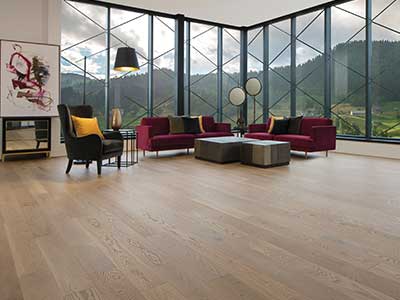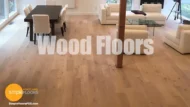Choosing the right flooring for your home is essential to avoid costly mistakes. Different rooms require specific materials based on moisture and foot traffic. For example, hardwood may not be suitable for high-humidity areas like bathrooms. Research and careful planning can prevent common problems like warping or mold.
Additionally, improper installation can lead to issues like buckling and gaps, shortening your floor’s lifespan. By hiring professional installers and considering long-term trends, homeowners can enhance their floors’ aesthetic appeal and durability. Thoughtful planning ensures a successful renovation that meets both practical needs and style preferences.
Selecting the Wrong Material for the Space
One of the most common pitfalls homeowners make is selecting the wrong flooring material for a specific area. Different rooms have unique requirements based on humidity, foot traffic, and usage patterns. For instance, hardwood floors may not be the best choice for high-moisture areas like bathrooms or basements, where excessive dampness could lead to damage over time. Instead, water-resistant options like tile or luxury vinyl plank (LVP) should be considered for these spaces, as they offer durability without compromising style.
According to the National Association of Home Builders, approximately 40% of homeowners encounter issues related to flooring material choice after installation. Choosing a material that does not suit the room can lead to complications like warping, mold growth, and increased maintenance costs. To avoid this mistake, take time to research and choose flooring materials that fit the specific needs of each area in your home.
Additionally, consult with flooring professionals for guidance on material selection. Experts can provide valuable insights about the suitability of different options for various environments within your home. By investing time in this planning phase, you can ensure a harmonious balance between aesthetics and functionality, ultimately creating a more comfortable and long-lasting living space.
Ignoring Proper Installation Techniques
Improper installation is another common error that can lead to costly repairs and a shorter lifespan for your flooring. When flooring is not installed according to manufacturer guidelines, you may experience issues such as buckling, gaps, or uneven surfaces. For example, laminate and vinyl floors often require specific acclimation times and installation methods to ensure a proper fit. Furthermore, neglecting to use the right underlayment can amplify problems related to moisture and sound absorption.
A Home Improvement Research Institute survey found that about 50% of flooring issues arise from improper installation. To prevent this, consider hiring a professional installer who has experience with the specific type of flooring you’ve chosen. This investment not only guarantees proper installation but also extends the lifespan of your flooring.
By prioritizing expert installation, you help ensure your flooring materials’ optimal performance and aesthetic appeal. Don’t hesitate to ask an installer questions about their method, as informed homeowners often get better results. Additionally, understanding common installation techniques can empower you to supervise the process and ensure the quality you deserve.
Overlooking Flooring Maintenance Requirements
Many homeowners overlook the maintenance requirements of different flooring types when making their selections. While some flooring materials offer great aesthetic appeal, they may come with high upkeep needs. For example, natural stone floors can be stunning but require regular sealing to prevent stains and damage. This ongoing maintenance takes time and can increase overall costs as you invest in cleaning supplies and services.
On the other hand, LVP and tile flooring are generally easier to maintain and clean. According to a study by the National Association of Realtors, homes that feature low-maintenance flooring attract 20% more potential buyers, highlighting the importance of considering maintenance when renovating. Always review the required maintenance for each flooring type before making a final decision to avoid future headaches.
Furthermore, considering your household’s lifestyle can guide your flooring choice. For busy families or pet owners, selecting flooring that is up to wear and tear with minimal maintenance can enhance daily convenience. Assess your specific needs and preferences to make the best flooring decision for your home.
Not Evaluating Long-Term Trends
Another significant mistake homeowners make is choosing flooring based solely on current trends without considering long-term appeal. While certain styles may be in vogue today, they may not stand the test of time. For instance, overly intricate patterns or trendy colors may become outdated quickly, compelling homeowners to replace the flooring sooner than expected. This can lead to unnecessary expenses and disruptions.
To mitigate this risk, select classic and timeless designs that blend seamlessly with various decor styles. Neutral colors and styles, such as wide-plank hardwood or simple tile designs, often have greater longevity and appeal. By opting for these enduring choices, homeowners ensure that their flooring remains relevant and stylish through changing trends. This approach not only saves you money in the long run but also enhances the value of your home, making it more attractive to potential buyers as trends shift. Investing in timeless flooring creates a beautiful foundation that complements your evolving interior design.
Failing to Consider Resale Value
Home improvement projects should consider resale value, especially if you plan to move in the future. Different flooring types can influence your home’s marketability. For example, hardwood floors are often viewed as desirable, while outdated or poorly chosen materials may deter potential buyers.
 Market research indicates that homes with hardwood flooring can sell for 2.5% more than comparable homes with less popular flooring options. Additionally, more than 70% of homebuyers prefer hardwood floors when searching for a new home. Furthermore, buyers in the Portland area often prioritize flooring choices that reflect a modern yet timeless aesthetic.
Market research indicates that homes with hardwood flooring can sell for 2.5% more than comparable homes with less popular flooring options. Additionally, more than 70% of homebuyers prefer hardwood floors when searching for a new home. Furthermore, buyers in the Portland area often prioritize flooring choices that reflect a modern yet timeless aesthetic.
By considering resale value, you can make flooring decisions that improve your enjoyment of the space and the overall value of your home. This consideration ensures that your investment enhances your living experience and appeals to future buyers, safeguarding your financial interests.
Underestimating Budget and Costs
Home renovations can quickly become costly, especially if the flooring budget is underestimated. Homeowners often fail to account for additional costs such as installation, underlayment, and finishing, leading to budget overruns. Factors like square footage, material type, and labor rates can all significantly influence costs. When choosing flooring, it is essential to understand the full cost of the product and any associated expenses that could arise during installation.
To avoid budget issues, create a detailed renovation plan that outlines all costs and add a contingency fund of 10-20% for unexpected expenses. This practice fosters financial preparedness, alleviating stress during the renovation process. Having a clear financial roadmap ensures you stay on track while allowing flexibility for any unforeseen circumstances that may arise along the way. By being proactive about budgeting, you can enjoy your renovation without the constant worry of overspending.
Neglecting the Importance of Underlayment
Underlayment plays a vital role in the performance and longevity of many flooring types, particularly laminate and hardwood. It provides additional cushioning, soundproofing, and moisture barriers. Some homeowners overlook this critical aspect, leading to floor issues later on.
Neglecting underlayment can result in increased noise levels, reduced insulation, and even damage to the flooring. Ensure you choose the correct type based on your flooring choice and local conditions. Investing in a quality underlayment will enhance your floors’ overall comfort and performance.
Disregarding the Importance of Lighting
Lighting significantly affects how flooring appears in your home. A flooring choice that looks stunning in the store may appear completely different under the specific lighting in your space. Consider how the natural light, fixtures, and color of walls will influence the look of your new floors.
Take the time to observe the flooring samples in your lighting conditions before finalizing your decision. This measure ensures that your chosen flooring complements the overall design of your interior.
Ignoring Professional Advice
While many homeowners feel confident in their ability to select flooring, seeking professional advice can prevent costly mistakes. Experts can provide invaluable insights into material suitability, installation techniques, and the latest design trends you may not know.
Flooring professionals have firsthand experience with various products and styles, which allows them to recommend options based on your specific lifestyle and preferences. Consulting with these experts, either online or at a local store, can help you make informed choices that align with your home’s overall aesthetic and functionality. They can guide you through the options that best meet your needs, leading to a successful and satisfying renovation. Ultimately, leveraging professional guidance allows you to avoid common pitfalls and achieve the results you desire without unnecessary stress or confusion. Making informed decisions can enhance the beauty and longevity of your flooring investment.
Make Informed Flooring Choices
Renovating your home involves many decisions, and flooring should not be taken lightly. By avoiding these common flooring mistakes, homeowners can ensure a successful renovation that meets their lifestyle needs. This careful consideration not only enhances the home’s aesthetic appeal but also safeguards the investment for years to come.
Researching flooring options, hiring professionals, and understanding maintenance needs can make a world of difference. You will be happier with your choices and feel confident knowing your flooring can withstand the test of time. With thoughtful planning and informed decisions, you can create a beautiful, functional living space that reflects your unique style.








